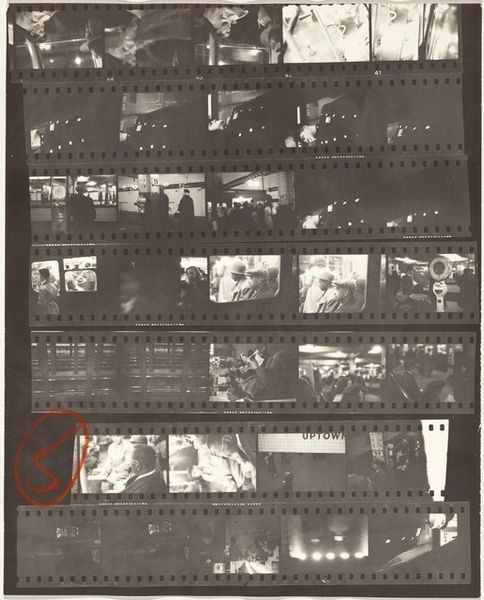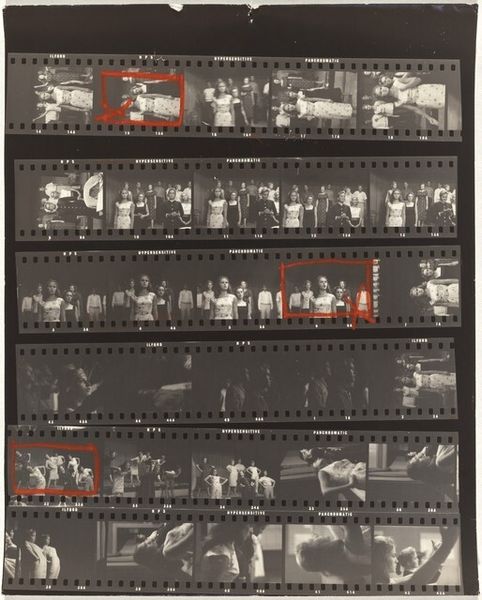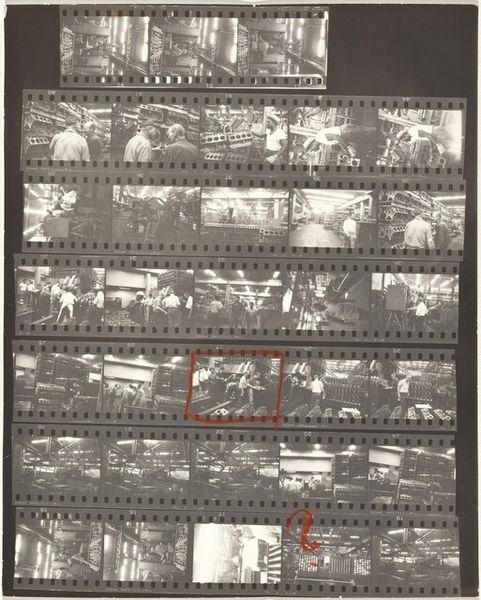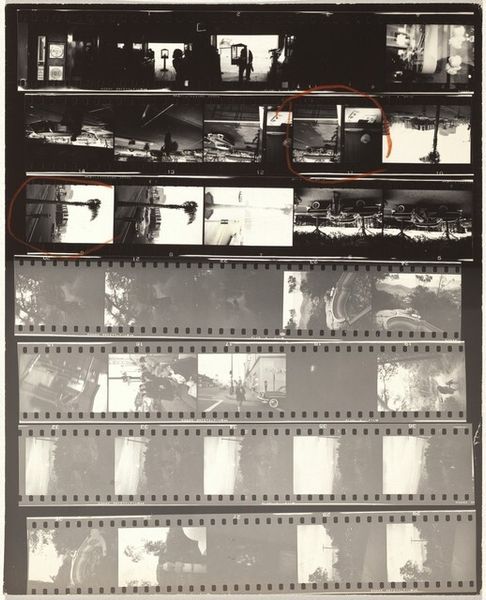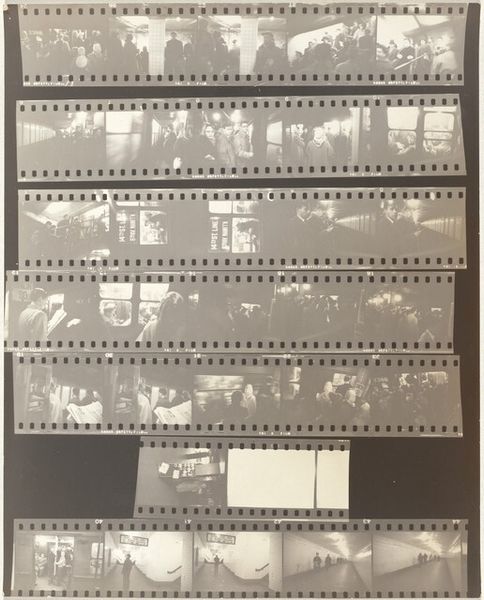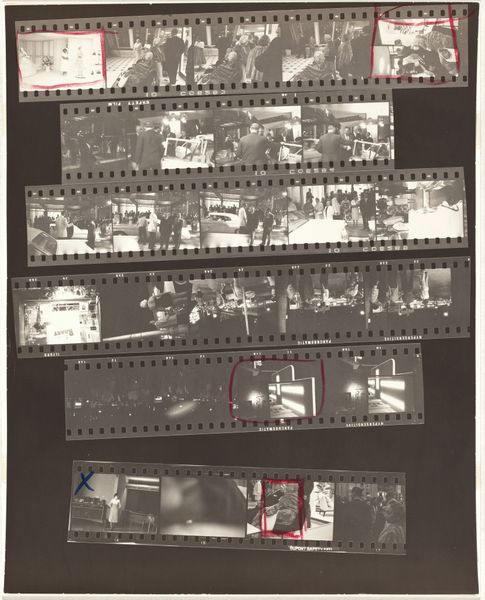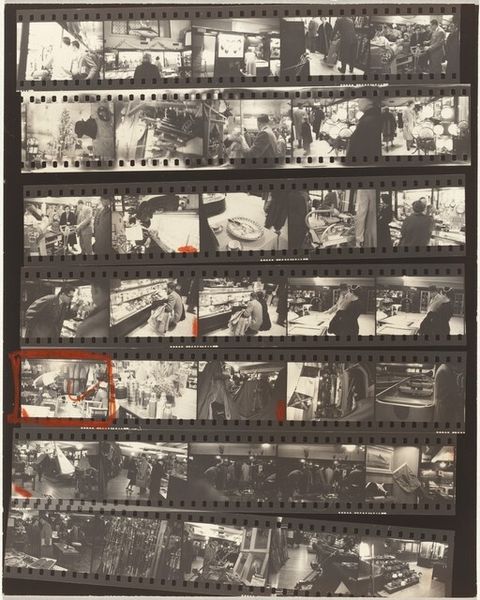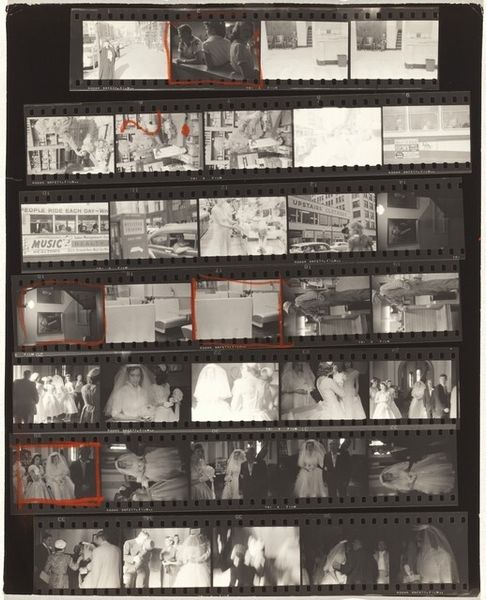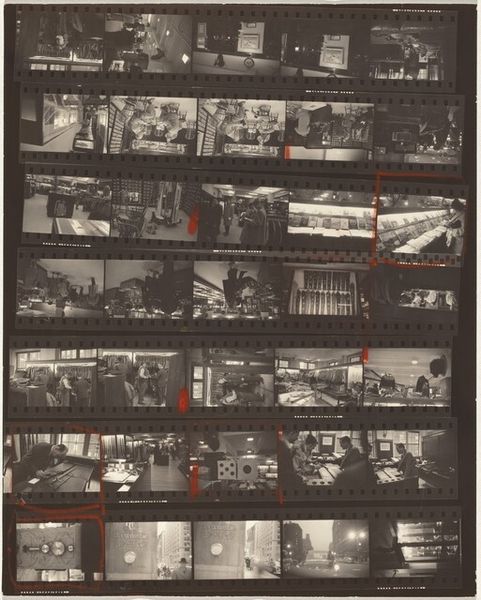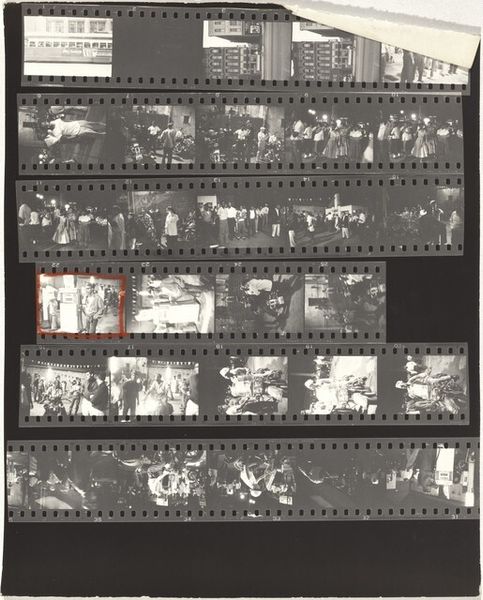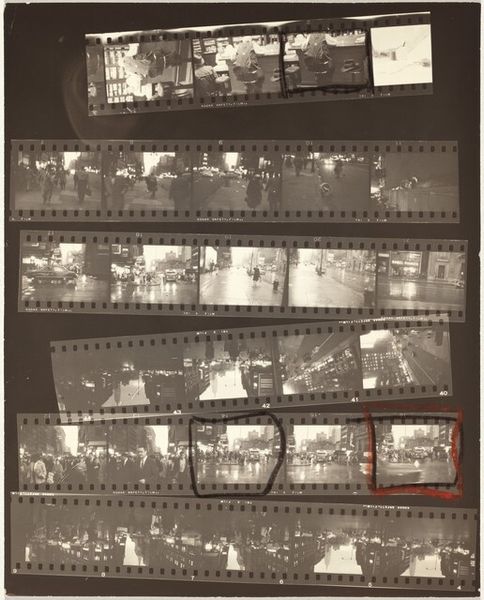
print, photography, gelatin-silver-print
# print
#
social-realism
#
street-photography
#
photography
#
gelatin-silver-print
#
modernism
#
realism
#
monochrome
Dimensions: overall: 25.3 x 20.3 cm (9 15/16 x 8 in.)
Copyright: National Gallery of Art: CC0 1.0
Curator: Immediately striking is the gritty, almost raw quality of Robert Frank's 1955 photograph, "Guggenheim 90/Ford 13--Detroit." It looks like an untouched contact sheet. What's your take on this work? Editor: It feels unfinished, almost like a discarded element of production rather than a deliberate art piece. Seeing the images laid bare like this, with the artist's marks still visible, offers an unusual perspective on labor. Curator: Precisely! Notice the specific framing—a reel of film documenting labor at a Ford factory. Each image, while seemingly simple, becomes loaded with meaning, representing the countless hours and individual actions that coalesce into a finished product. Consider the red boxes drawn around some images... they resemble ritualistic or coded gestures that hold specific meaning to the photographer’s experience. Editor: Those are very interesting! It is thought-provoking to consider the material realities of photographic labor itself—the physical act of developing, printing, and editing, revealed so candidly. We're made aware of the whole manufacturing process rather than just the slick image on the magazine page. Curator: This aligns with Frank’s broader project in *The Americans*. It deconstructs established ideas, it questions and challenges through its form and content. Think of the visual weight of the frame’s perforations. They give rhythm, but also hint at limitation. Are these pictures windows, or prisons? Editor: A compelling tension, right? And in focusing on Detroit and Ford, he's pinpointing a critical site of American industrial power in the mid-20th century. These individuals are directly feeding into that national and global system. You're seeing a small moment of that large network and power. Curator: Exactly. The cumulative effect is a poignant commentary on the lives intertwined with mass production and cultural narratives manufactured by it. We can consider its echoes of the industrial sublime—at once awe-inspiring and alienating. Editor: I like your read of that, in terms of that sublime nature of awe mixed with that discomfort that stems from seeing humans almost reduced to component pieces in this much larger production line. Curator: Yes. It reframes the way we look at familiar industrial spaces. This photograph provides insight into both the artistic decisions that go into the process and the physical labour upon which mass production rests. Editor: Well, this look has certainly provided new angles of how material reality influences even our readings of this evocative print.
Comments
No comments
Be the first to comment and join the conversation on the ultimate creative platform.

